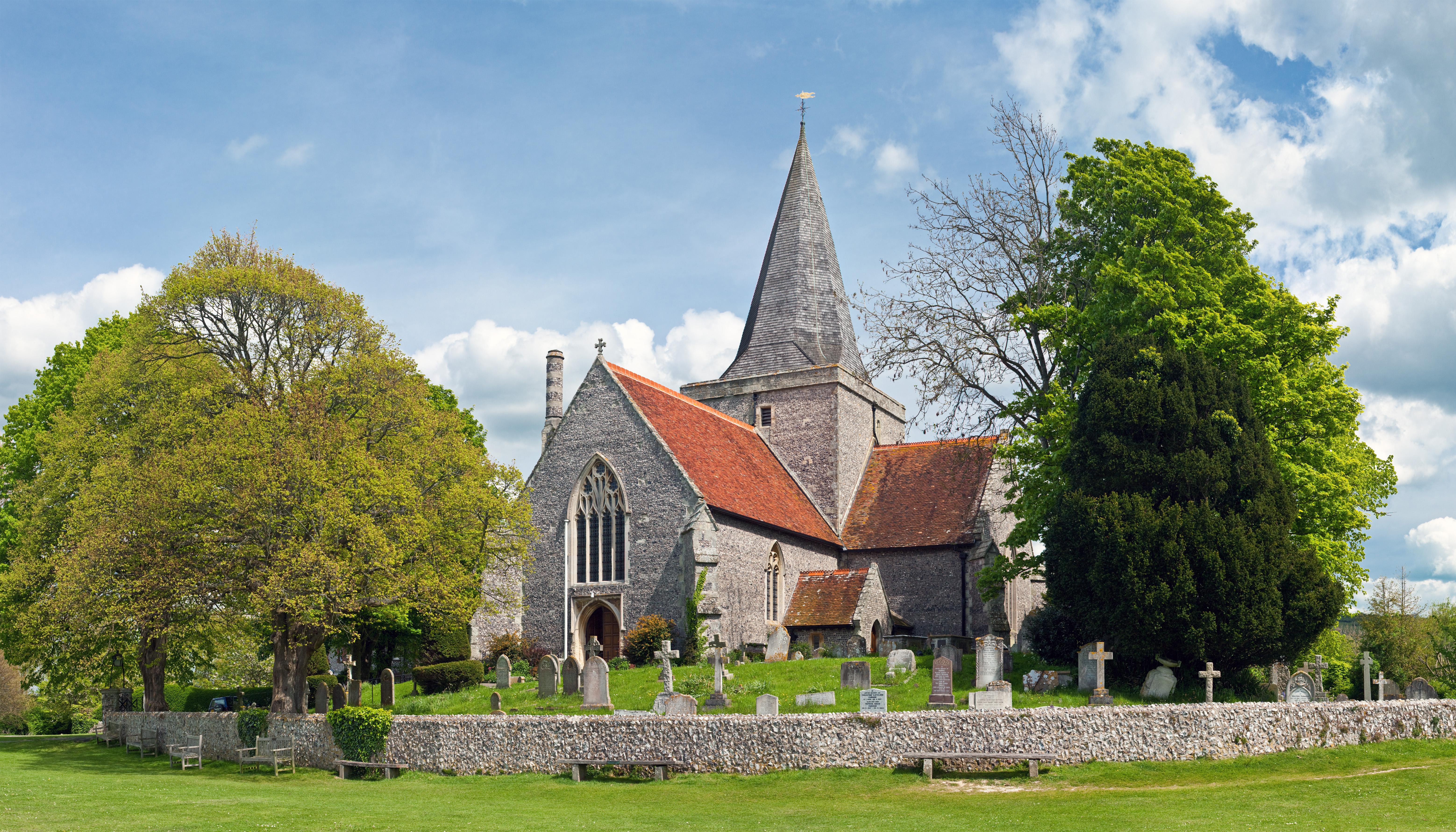St Michael the Archangel
Litlington, Sussex
A picturesque downland church in the heart of the Cuckmere Valley.

Standing on high ground beside the thatched 14th century parsonage, the church dates to around 1370, a strangely late date for this part of Sussex.
Alfriston, Sussex
It stands beside the Tye, a large green that may have served as a market in medieval times. In 1399 the church was granted to Michelham Priory. The church is built on a small mound, surrounded by a flint wall, suggesting that the site was a sacred place in the pre Christian period. The sheer scale of the church has led to its moniker 'The Cathedral of the Downs'. The church seems to have been built in one go, also unusual, at a time when most churches evolved slowly over centuries.
There is no indication of who built the church, and indeed, Alfriston did not even have a lord of the manor at the time. All of which raises the question of why a small village without even a lord of the manor should have such a large and impressive church.
Like most Sussex churches, it is built of knapped flint, with greensand stone for quoins. The roof was originally topped with Horsham stone, but that proved too heavy and was replaced by clay tiles.
The layout is very simple; a cruciform plan with a central tower and no aisles. The nave and chancel are the same length, though the transepts are shorter, creating a traditional cross shape.
One of the best features of St Andrew's is the timber roof, built to a crown post design. Most is original 13th century work, save only the south transept. On the north side of the chancel is an Easter Sepulchre, within which is a chest tomb. Atop the tomb are carved stone figures that originally decorated the 19th century reredos over the high altar. On the north wall of the nave is a funeral hatchment to Richard Vincent (d1733). Under the gallery stairs is an old bell, cast in 1587.
The font may be older than the church, but is at least 14th century, and is set atop a later base. There is a royal coat of arms to George I, dated 1725. The church contains a very pleasing mix of medieval and relatively modern glass.
Litlington, Sussex
A picturesque downland church in the heart of the Cuckmere Valley.
Lullington, Sussex
Originally part of a much larger building, which was destroyed by fire (probably in the time of Cromwell), the tiny church of The Good Shepherd was rebuilt from the original chancel.
Wilmington, Sussex
Wilmington is a Downland village of Saxon origin, the present church was first built around 1200 as a chapel to the adjacent Priory and a feature of the churchyard is the ancient Yew tree, estimated to be 1600 years old, the trunk having a girth of 23ft.